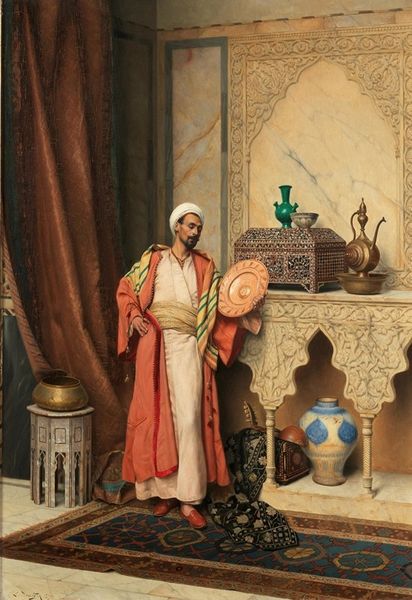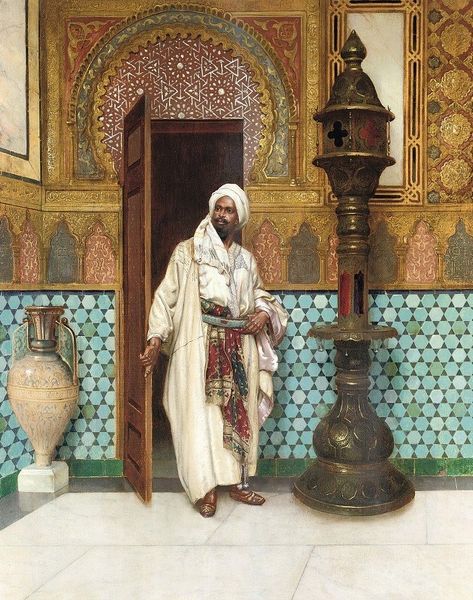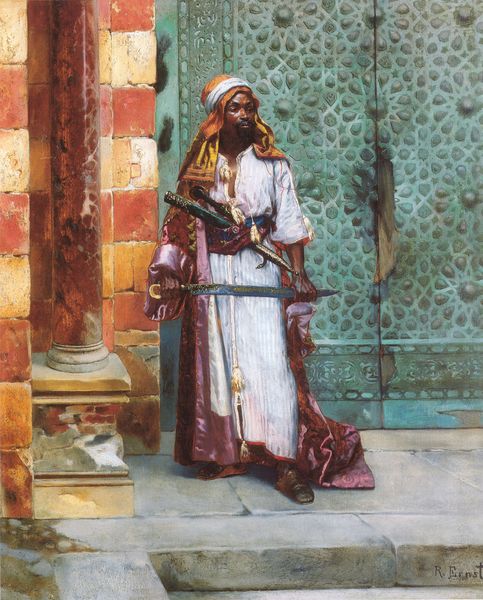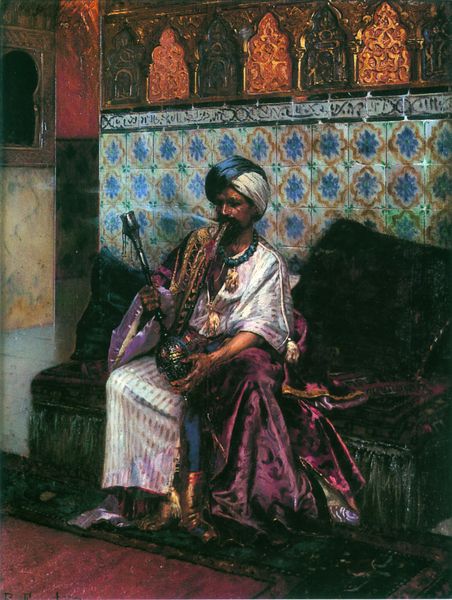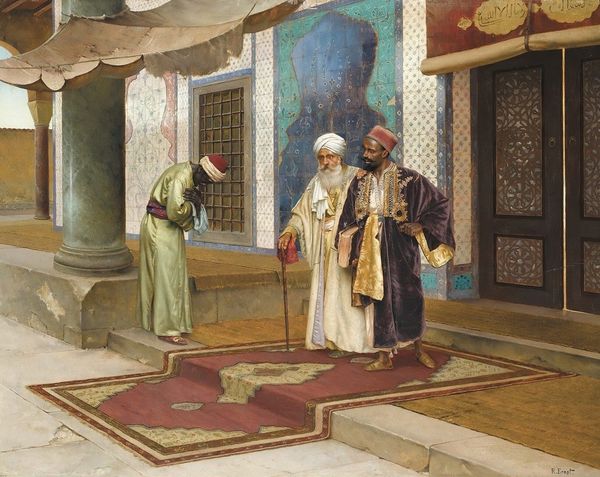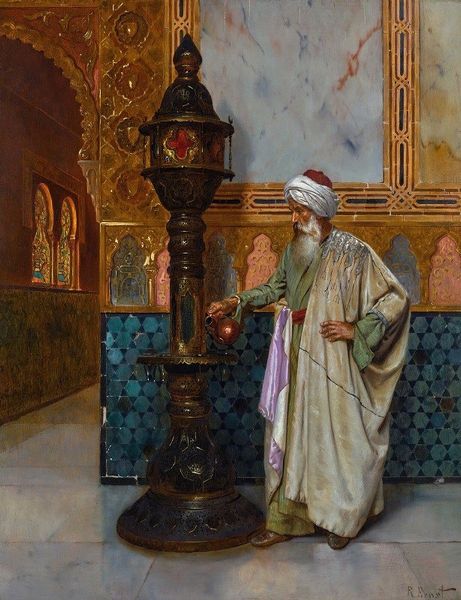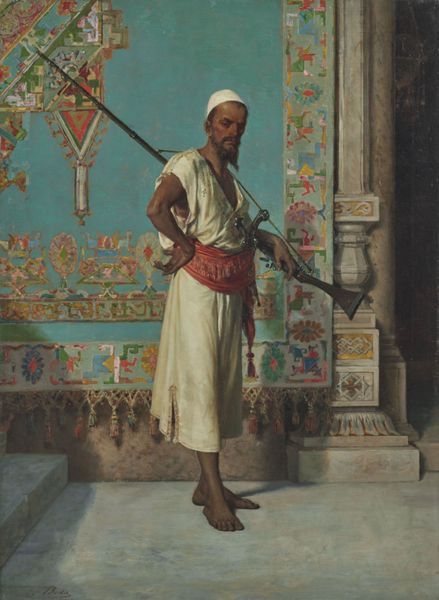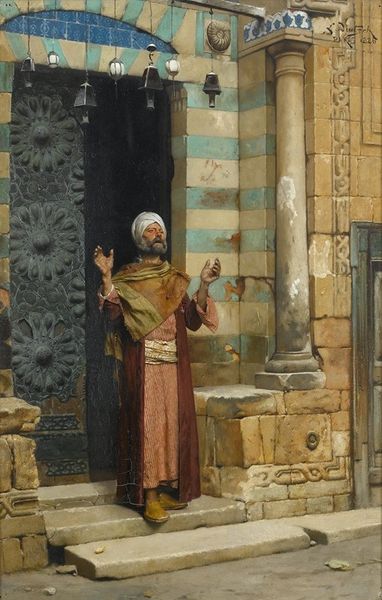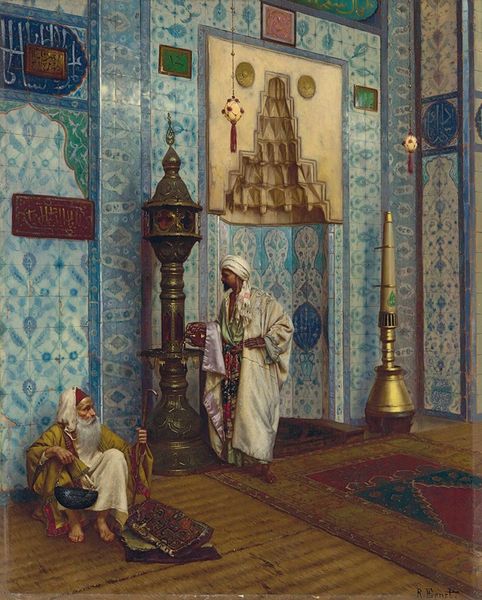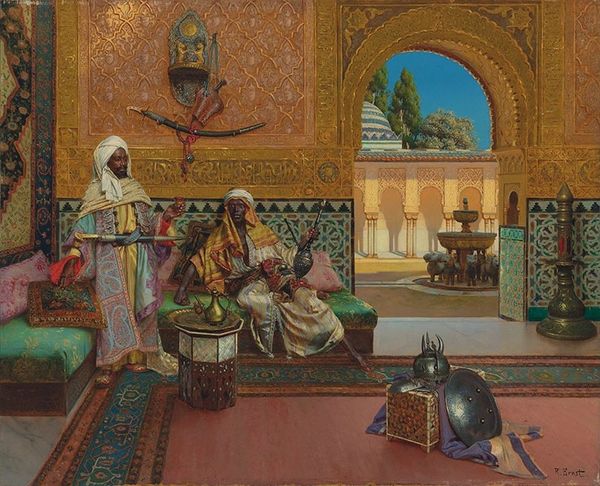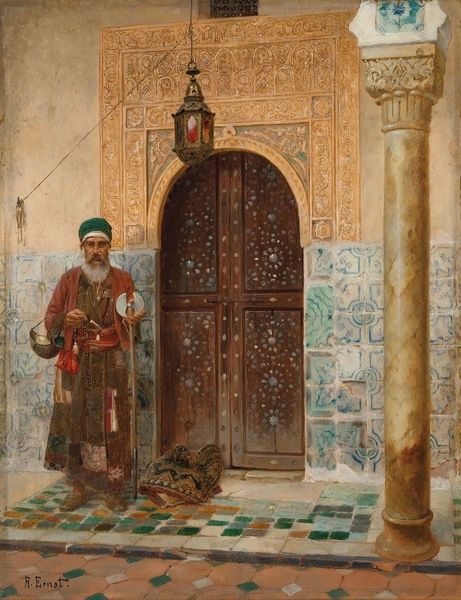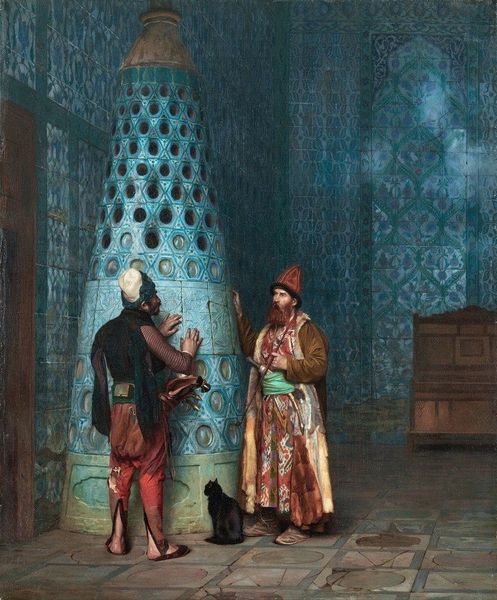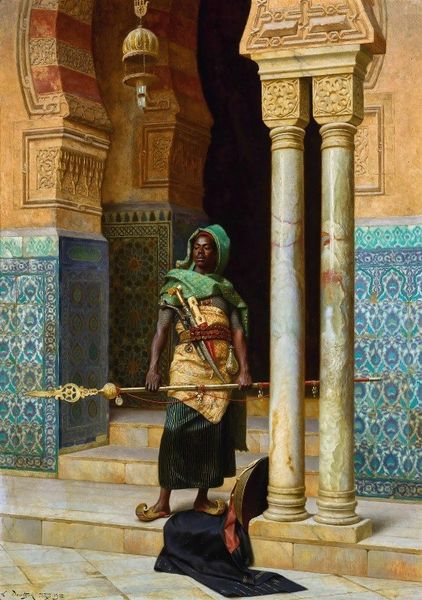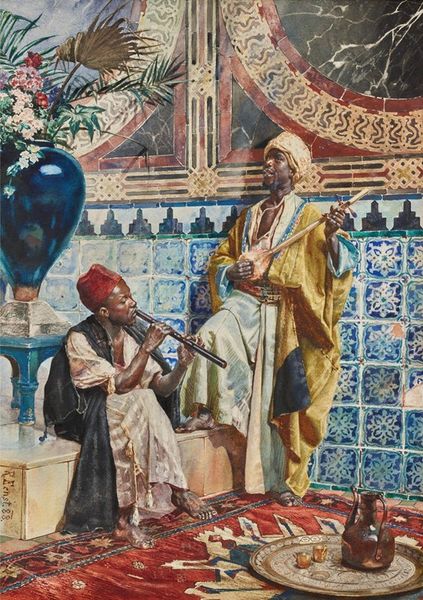
painting, oil-paint
#
portrait
#
painting
#
oil-paint
#
orientalism
#
19th century
#
islamic-art
#
genre-painting
Copyright: Public domain
Curator: Before us we have Rudolf Ernst’s painting entitled, *The Palace Guard*. Ernst was part of the Orientalist movement, but there's no specific creation date for this painting. What strikes you about it initially? Editor: Well, there's an immediate sense of quiet watchfulness. The guard's pose—slightly turned, alert expression—suggests vigilance within a contained, luxurious space. It also reeks of a colonial gaze appropriating Islamic aesthetics to service its fantasies of conquest and control. Curator: Exactly. It speaks to a broader trope present in Orientalist art, placing the Western viewer as an implicit observer, an outsider permitted access to this ‘exotic’ world. The guard’s weapons symbolize the constant negotiation of power between cultures. Think about the psychological weight these symbols carry for audiences today, echoing centuries of interaction, exchange, and sometimes, violent conflict. Editor: Absolutely. Consider how Ernst’s painting perpetuates a visual power imbalance. This isn't merely a picturesque scene but rather a symbolic representation of dominance where the guard is a signifier of control. The cool indifference on his face only serves to underline it. Curator: What about the colors and light? Do you notice the artist plays with contrasting colors that contribute to this overall impression? Editor: Definitely. The warm yellows and golds versus the cool blues and greens. It creates a kind of seductive allure, but for me, it masks an underlying tension. The intricate tilework, for example, while visually beautiful, speaks to an artistry divorced from its cultural and historical context by the Orientalist project. Curator: Precisely. Each tile carries layers of meaning within its tradition. This, of course, invites viewers to consider these objects and, by extension, the guard himself, not as unique entities, but as embodiments of a generalized 'Orient.' Editor: It prompts us to consider our role as spectators. Are we passively consuming this image, or are we actively engaging with the power dynamics it represents? What is this 'Palace Guard' guarding, exactly? Whose interests are being served by this depiction? Curator: And, crucially, what responsibilities do we, as viewers, carry when confronting images steeped in such complex histories? It serves as a potent reminder that images are never neutral. They are imbued with the beliefs, intentions, and the historical context of their creators. Editor: Indeed. Art can offer crucial tools to understand how these cross-cultural biases have, for far too long, normalized the misrepresentation and oppression of others. Curator: Agreed. The cultural memory encoded in objects extends into our present day—reconfiguring how we perceive power, difference, and value. Editor: So, perhaps by examining *The Palace Guard*, we can begin to critically reassess this artistic genre’s role in constructing the complex realities of intercultural relationships today.
Comments
No comments
Be the first to comment and join the conversation on the ultimate creative platform.
